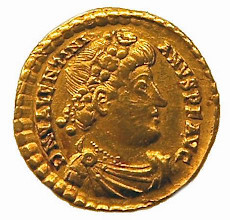Asciburgium (Moers-Asberg)
Q723019Asciburgium: Roman fort, part of the Rhine limes, modern Asberg.
Although the Roman historian Tacitus claims that Asciburgium ("fort of the ash wood") was founded by the Greek hero Odysseus, this auxiliary fort, opposite the confluence of the Ruhr and the frontier river Rhine, was in fact built by Drusus in 12/11 BCE. Originally, it measured about 1.6 hectare, but when it was later rebuilt (on four occasions) it was expanded to about 2.3 hectare. The fort was finally abandoned in 83-85 because the Rhine had changed its course in the second half of the first century. The garrison was transferred to a nearby place that is now called Werthausen.

Asciburgium remained a civil settlement of some importance, and may have boasted a sanctuary for a Celtic deity that reminded the Romans of Odysseus. It was certainly a station along the road from Neuss to Xanten, and -more important- it was at the beginning of an important trade road, leading to the heart of the Germanic area on the east bank of the Rhine. During the Middle Ages, this route was called the Hellweg, and is more or less identical to the current Bundesstrasse 1 to Duisburg and Magdeburg. Many Roman coins that were discovered along this route prove that it was already in existence in Antiquity.
The emperor Valentinian I (364-375) built a small castle (burgus) on the site of the old fort, which was still in use in the second quarter of the fifth century.